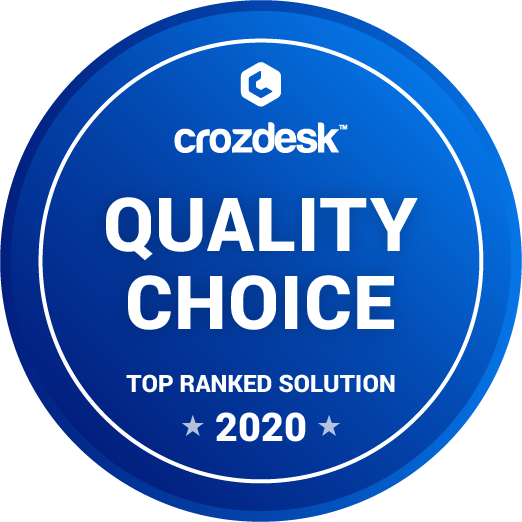
At a time of real-time marketing, success often hinges on a team’s speed and intelligence in acting upon data. With social media shaping brand conversations and consumer sentiment daily, marketers can no longer rely solely on instinct – instead need tools that not only capture relevant insights, but automate how this data drives action.
That is where hashtag intelligence and data automation come into play. By combining insights from platforms like TrackMyHashtag with automated backend systems, modern marketers can operate more clearly, quickly, and efficiently than ever.
Let’s examine how these powerful partners combine to form an intelligent marketing stack–and how you can use data mapping tools to bring it all together.
Understanding Hashtag Intelligence by 2025
What Is Hashtag Intelligence?
Hashtag intelligence refers to the strategic use of real-time and historical hashtag performance data to inform content strategy, influencer partnerships, and engagement tactics. Platforms such as TrackMyHashtag provide detailed analysis on metrics such as reach, impressions, frequency, user sentiment analysis for specific hashtags.
Why It Is Essential for Marketers
Hashtag intelligence provides marketers with several advantages:
Real-time trend tracking: Keep an eye out for what’s hot, and adjust your strategy accordingly.
Audience insights: Discover which demographics, geographies and influencers are engaging with your campaign.
Campaign Analysis: Assess which hashtags are performing well and which are underperforming in order to determine their efficacy in future campaigns.
No matter what product or campaign is at the forefront, these insights provide invaluable tools for creating messages that engage and convert.
Data Automation in Marketing
What Is Data Automation In Marketing? Data automation refers to using software programs to collect, organize, transform, and route information from multiple sources such as social media platforms, ad accounts, CRM systems, analytics tools etc into central dashboards or systems for analysis.
Benefits of Data Automation
Saves time: Automate repetitive reporting and manual data entry tasks for faster results.
Enhance Accuracy: Minimize human errors when processing data.
Fuel agility: Keep pace with market changes and campaign performance instantly.
Automation makes tracking hashtag performance at live events effortless: its data instantly updated on team dashboards or piped into Slack alerts are an incredible time saver.
Why Marketers Require Both: Bridging Two Worlds
The Problem with Disconnected Systems
Many marketing teams operate with scattered insights across platforms, with social media teams monitoring hashtags, analytics teams tracking conversions, and sales teams using CRM platforms–but rarely do these systems communicate with one another, leading to slow decision-making processes and missed opportunities.
Solution: Integrate Hashtag Intelligence With Data Automation
By automating hashtag data into your analytics environment, you gain a comprehensive view of campaign effectiveness. Quickly identify what’s driving traffic to your brand, who’s engaging with it, and any shifts in sentiment–all from one central location.
Data Mapping Tools Are Essential to Integration Success
Integrating artificial intelligence platforms with internal systems requires translating unstructured or semistructured data into standard formats – that’s where data mapping tools come in.
These tools allow you to: Transform data fields from social platforms into CRM or analytics tools.
Transform unstructured text into usable formats (such as linking hashtag mentions to campaign IDs).
Keep all your systems consistent to enable reliable reporting and automation.
Real-World Application
Imagine running a fashion brand. Your seasonal hashtag, #FallFits2025, is being tracked using TrackMyHashtag; using data mapping technology you are tracking its engagement. By automating data collection on this hashtag you can automatically:
Extract top-performing posts and map them to influencer profiles in your CRM system.
Integrate UTM-coded URLs for conversion tracking.
Create a report in your dashboard detailing how each hashtag-driven touchpoint contributed to revenue.
Building Your Smart Marketing Stack
Checklist: Essential Elements
Here is what a typical modern marketing tech stack might include:
TrackMyHashtag provides real-time monitoring and intelligence platform.
Hevo provides data mapping and integration tools to efficiently route and standardize data.
Visualize campaign performance using our Analytics Dashboard
Engage a CRM or marketing automation platform – To take appropriate actions based on insights.
Workflow Automation – To close the loop and ensure an uninterrupted workflow process, utilize tools like Zapier or Make.
Set Up Step by Step [Tracker My Hashtag]: For easy campaign tracking use this step-by-step guide:
Hevo or another similar tool allows users to map and transform data.
Provide data directly to your dashboard or CRM.
Automate alerts or workflow updates when predetermined metrics (e.g. engagement spikes or sentiment shifts) are achieved.
Conclusion
Marketing today requires both creativity and data agility. Hashtag intelligence helps marketers better understand their target audiences; data automation enables quick implementation; while tools like data mapping provide the link between insights and action.
If your organization is still operating siloed, now is the time to integrate your toolkit. When you combine smart hashtag tracking with seamless data integration, not only are you responding, but rather leading the dialogue.
Raghav is a talented content writer with a passion to create informative and interesting articles. With a degree in English Literature, Raghav possesses an inquisitive mind and a thirst for learning. Raghav is a fact enthusiast who loves to unearth fascinating facts from a wide range of subjects. He firmly believes that learning is a lifelong journey and he is constantly seeking opportunities to increase his knowledge and discover new facts. So make sure to check out Raghav’s work for a wonderful reading.




